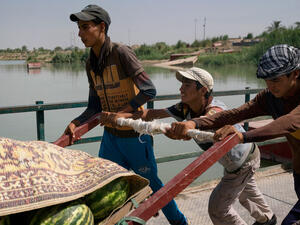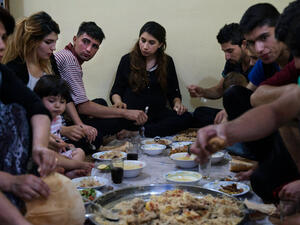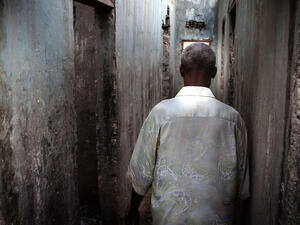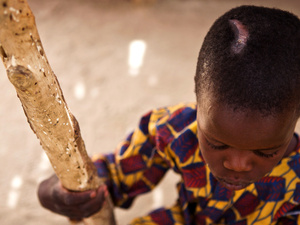UNHCR requests US$69 million to help internally displaced Pakistanis
UNHCR requests US$69 million to help internally displaced Pakistanis

Displaced Pakistani women and children enjoy some privacy in a UNHCR tent and annexe. The refugee agency has plans to continue helping those who remain internally displaced.
ISLAMABAD, Pakistan, February 9 (UNHCR) - The UN refugee agency on Tuesday called on donors for an extra US$69 million to help more than 1 million internally displaced people in Pakistan over the next six months.
The amount sought by UNHCR is part of a wider UN-led appeal for US$537 million to keep providing food and other humanitarian assistance to the hundreds of thousands of civilians displaced by conflict over the past year in northern Pakistan.
UNHCR needs the fresh funding to help those who remain displaced, to provide shelter, counselling and other assistance to people who have been able to return home, and to maintain emergency preparedness in case of more displacements in 2010. It also needs the money for its registration operations.
In terms of shelter, UNHCR is providing material support to build some 25,000 temporary homes for returnees in Malakand Division of the North-West Frontier Province. The agency may also provide similar help once people are able to return to areas such as South Waziristan and Bajaur Agency.
Last year, the refugee agency distributed some 430,000 non-food aid items, including 84,000 tents as well as blankets, sleeping mats, jerry cans, buckets, mosquito nets, plastic sheeting and kitchen sets. In recent weeks, it has helped register more than 280,000 people forced to flee their homes in the tribal district of South Waziristan.
UNHCR has also rushed relief supplies to help an estimated 135,000 people who fled their homes to escape a security forces operation against militants in Orakzai Agency in December 2009. The displaced sought shelter in neighbouring Hangu and Kohat agencies in the Federally Administered Tribal Areas (FATA).
The refugee agency is also helping people displaced by fighting in the North West Frontier Province in 2009. Most people have returned home, but some 100,000 remain in 10 camps run by UNHCR and the government.
This year, displacement and return patterns are expected to continue to fluctuate and affected communities will move from their homes to safer areas for short or long periods. Population movements from host families to the camps are also expected as host communities exhaust their resources.









